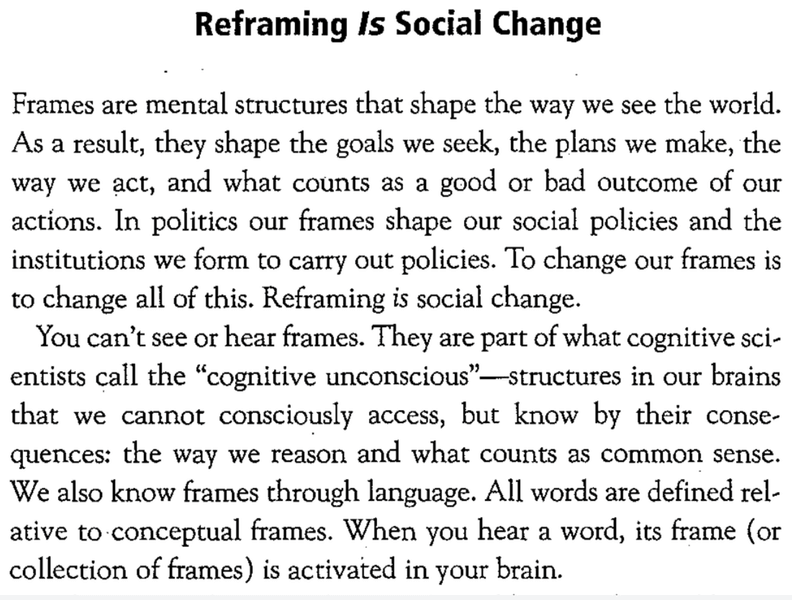Framing
What is included in a narrative, what is left out and the values it embodies are determined by what cognitive scientist and linguist George Lakoff refers to as ‘frames’. These cognitive structures are shaped by our personal and collective histories and allow us to conceptualize and organize what we see (and fail to see) and how we see it. The... See more
Designing Systems Interventions – Transition Design Seminar CMU

The rule of reframing can look different depending on what you're dealing with. But it always involves seeing a problem from a different angle, with the goal of breaking a cycle of harmful thoughts and behavior.
